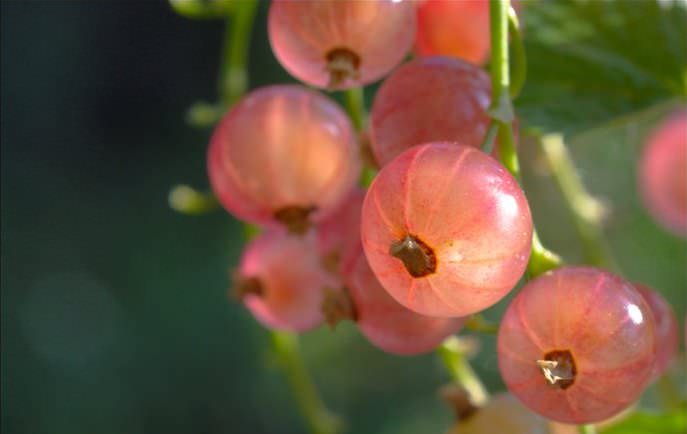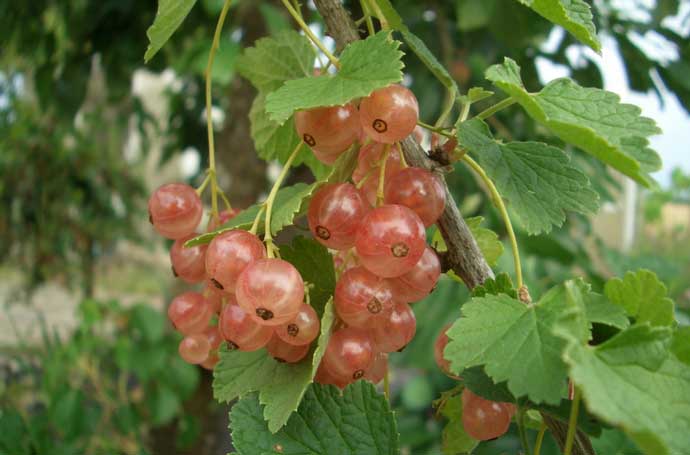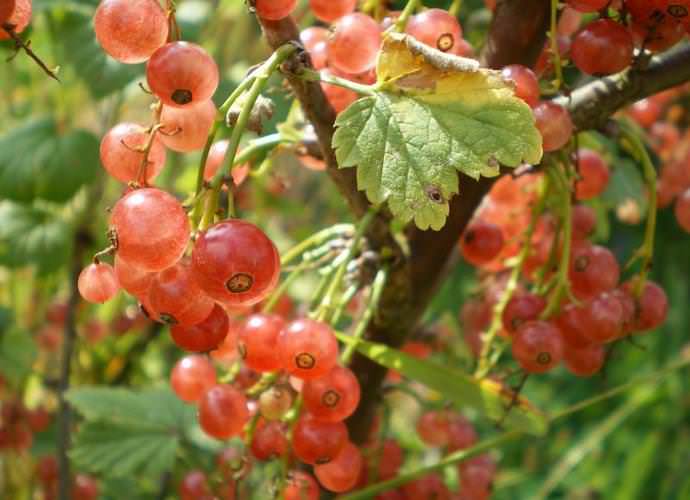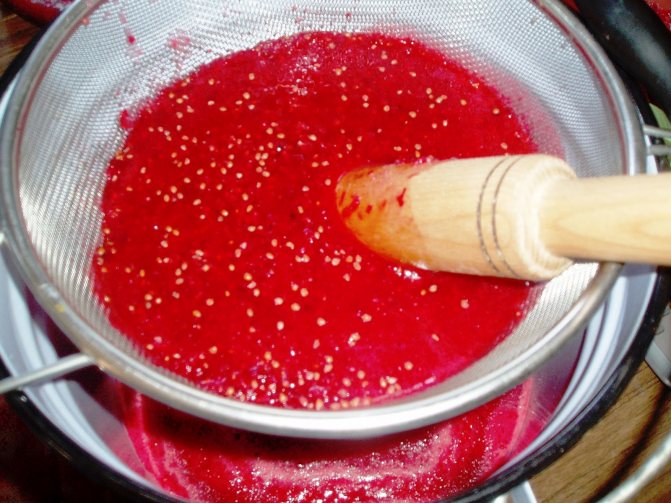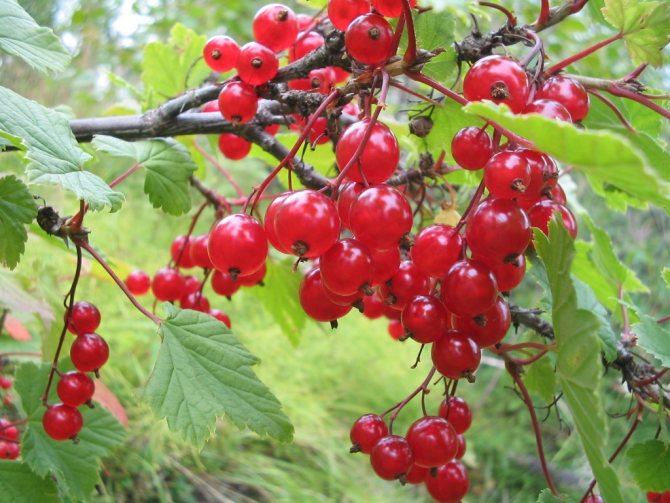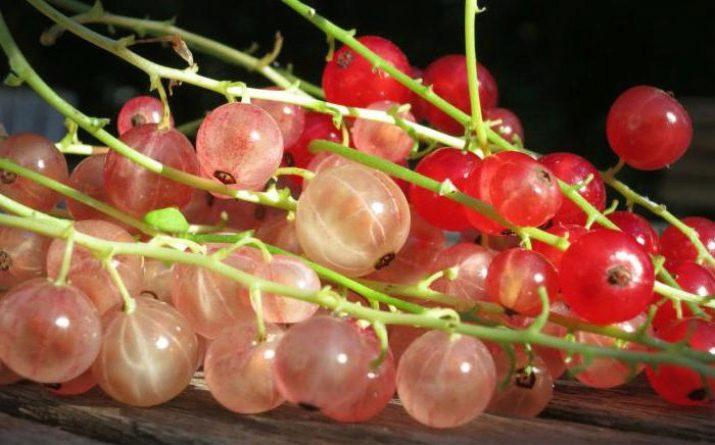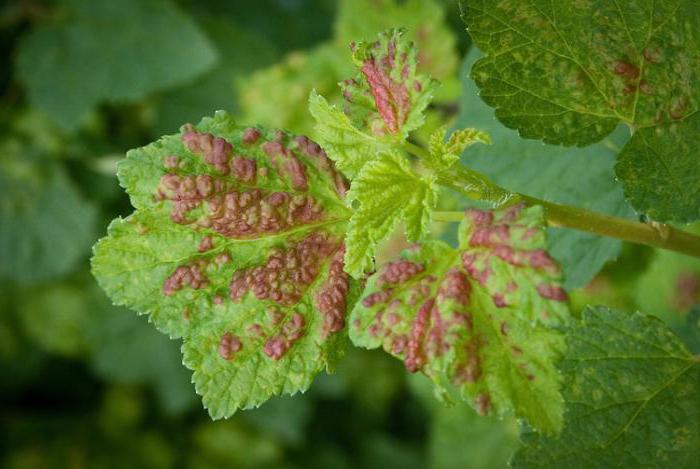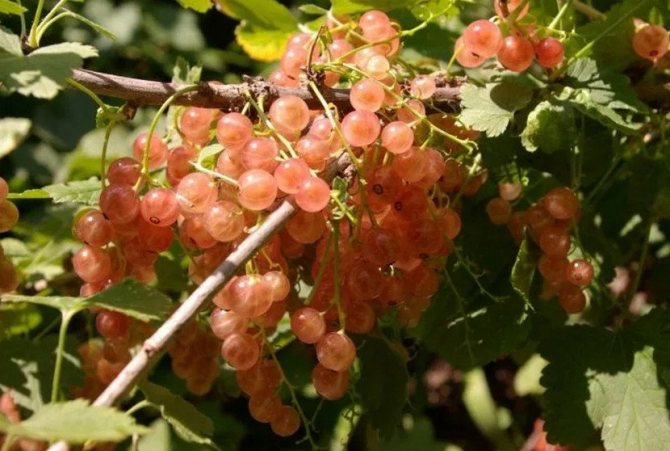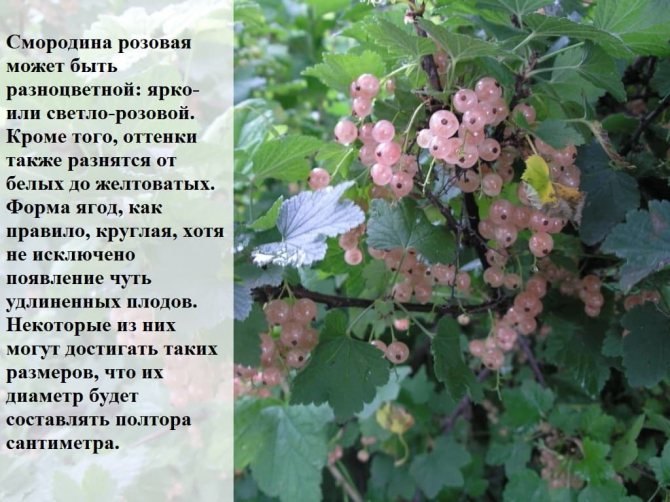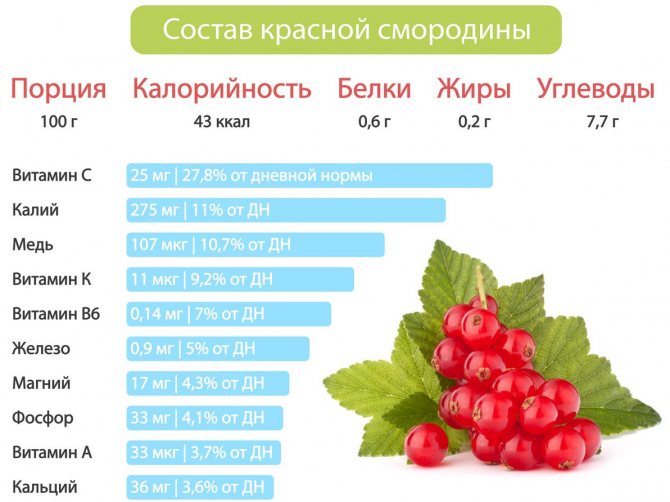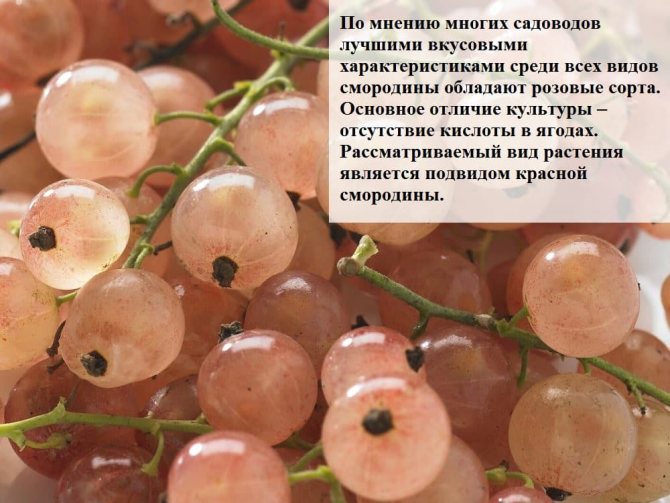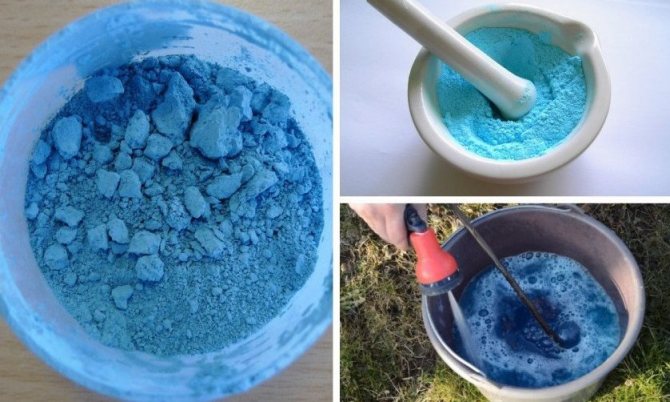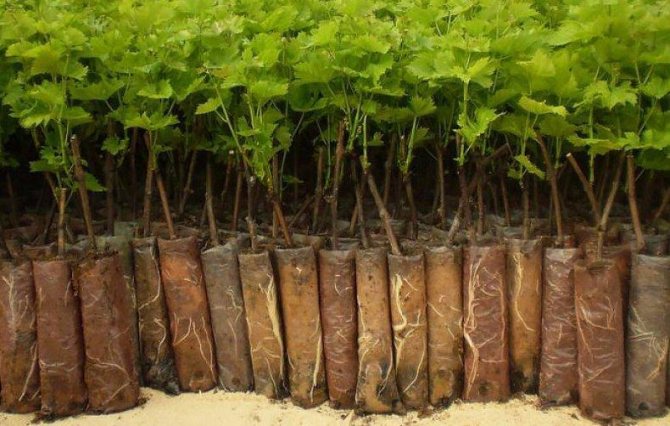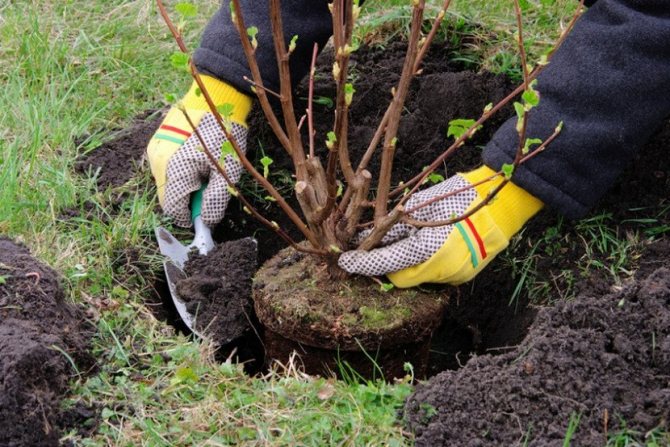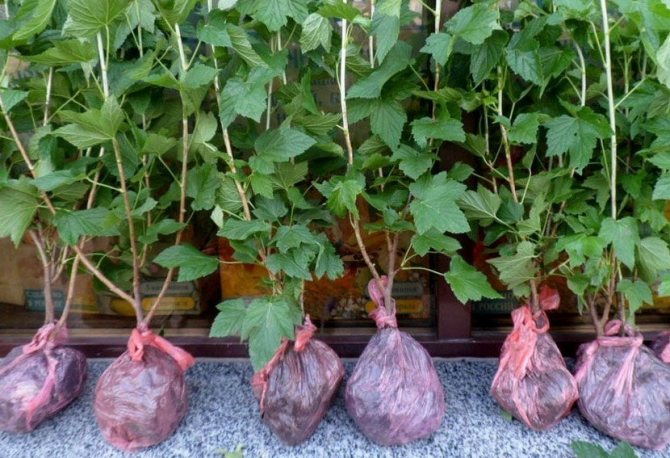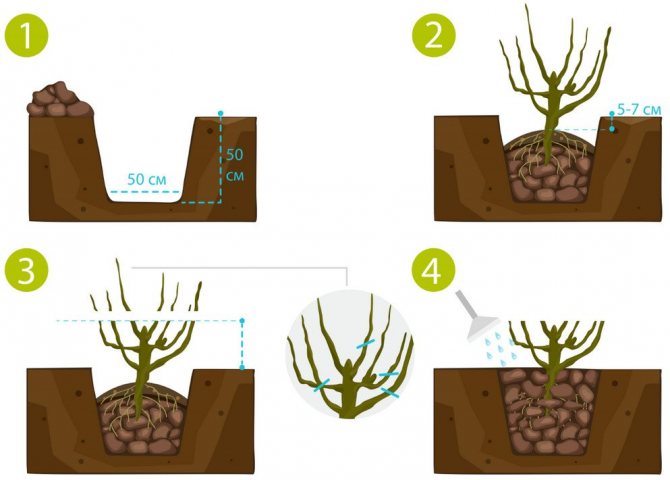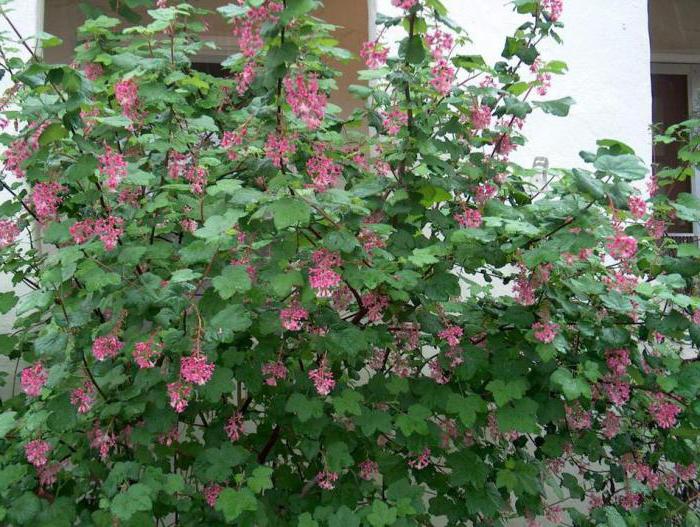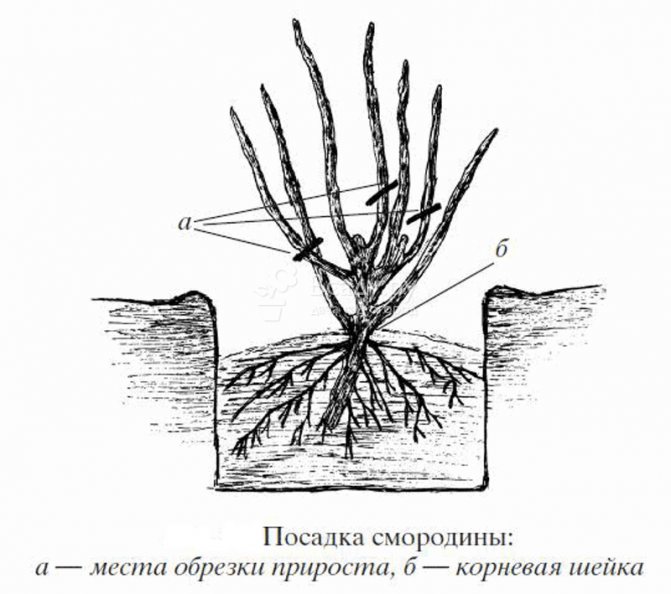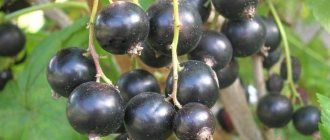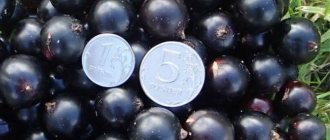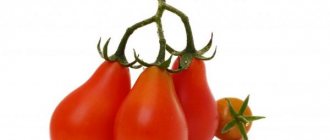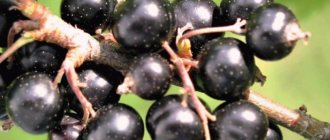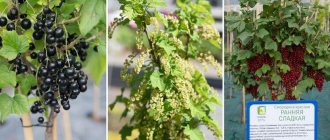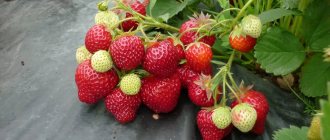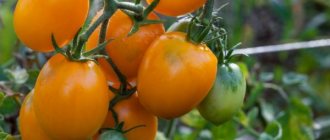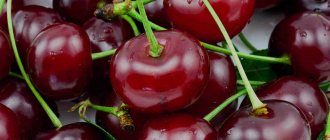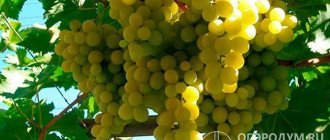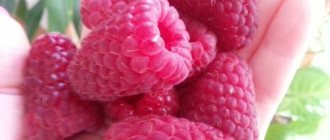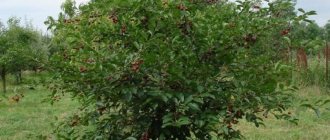A gardener who decides to plant a variety "Dutch pink" on the site will need knowledge of several recommendations for planting, caring for plants. Observing the rules, you can grow a bountiful harvest of berries.
Domestic gardeners successfully grow on the plots an unpretentious and productive variety of currants "Dutch pink". The plant does not require time and effort to care. Berries contain useful substances and microelements, they are used fresh and as compotes and jam to supply the body with vitamins in winter.
Pink currant: description of varieties
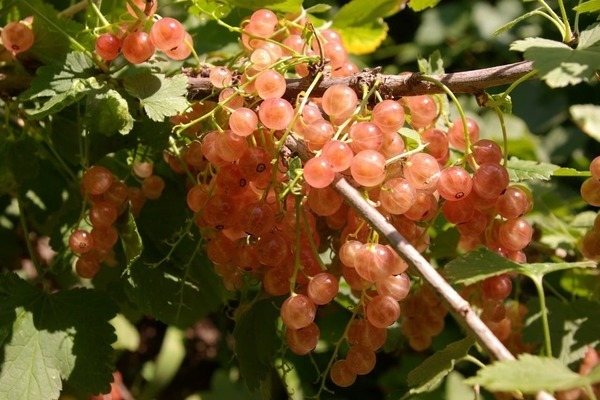
Pink currant is a fruit crop. It does not have a large number of varieties present in other varieties of currants. A distinctive feature is a pronounced, pleasant, sweetish taste. And the fruits are many times larger. The playful color of the berries ranges from pink to vibrant crimson hues. There is a small varietal variety. Below we will look at the features of the most popular varieties.
Reproduction
Pink currants are propagated by vegetative methods.
- The easiest way to get new plants and rejuvenate a fruit crop is to multiply by dividing the bush. For the procedure, an adult, healthy plant is chosen and dug out of the ground. The root system is divided into several equal parts with a sharp knife. Each bush should have leaves or buds. The resulting seedlings are transferred to open ground.
- A strong and healthy shoot is cut off from an adult bush, which is divided into several cuttings. On each cutting, there are 3 to 5 cuts. The plant is planted in fertile soil before rooting, then transplanted to a permanent place of residence.
- When propagating by layering, the strongest and healthiest lower branches are chosen from an adult bush. The twigs are tilted to the soil surface, fixed and covered with earth, leaving the upper part of the plant above the surface. During the growing season, the cuttings are moisturized. In autumn, the rooted shoots are separated from the mother bush and planted in open ground.
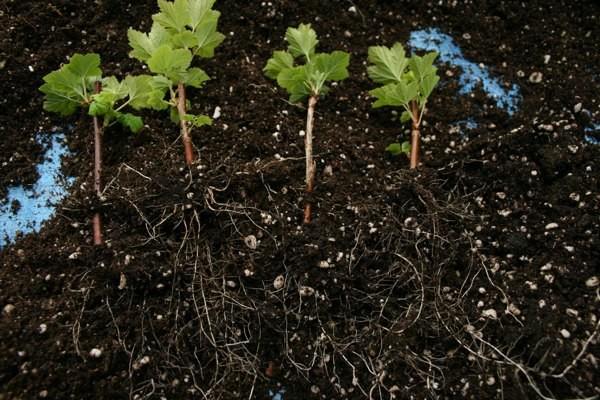

Seed propagation for hybrid crops is fraught with the loss of varietal characteristics.
Pink nutmeg


According to the descriptions, it is the best among the varieties. The bush grows compact, low. The crown is formed in the form of a ball. Beautiful flowers complete the overall picture. The peculiarity of this representative is in a delicate, delicate, nutmeg aroma. The sweet taste of juicy, large fruits, combined with the aroma, make up the perfect representation of Muscat Pink as a variety. The increased content of vitamins allows you to use fresh berries. But compotes, jams, jelly, fruit drinks will not become spoiled when using the fruit.
In addition to the variety of vitamins, Rose Muscat, like any other variety of currants, is rich in trace elements. Refers to crops with earlier ripening periods. In mid-June, such crops are already harvested. Pink nutmeg is excellently grown in places where partial shade is formed. But sunny areas are also suitable for the comfortable well-being of the shrub. For a good development of the bush and a healthy and abundant harvest, the soil must be fertile.
Harvesting and transportation, keeping berries
Red Dutch currant pink refers to late-ripening varieties. These beautiful berries ripen very amicably in late June - early July. The berries are very well attached to the brush, which prevents them from falling off prematurely.
It is better to pick currant fruits in dry, sunny weather, putting them in special containers that prevent them from being damaged. In such containers, berries can be safely transported and stored without worrying about their safety.
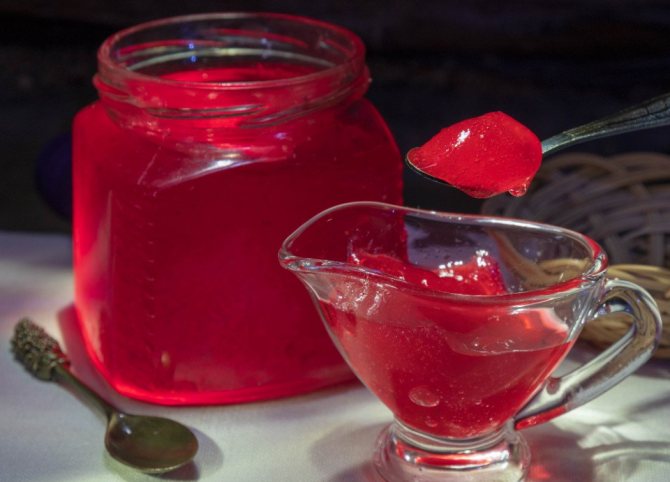

The Dutch pink currant has a very good gelling ability, so you can also cook jelly from it for the winter.
Red currants can be stored in the refrigerator for a long time without losing their beneficial properties. And if you want to prepare it for the winter, you need to separate the berries from the brush and put them in the freezer in a container or bag. Also, red currants can be stored sprinkled with sugar or in the form of jam and jam.
Dutch pink - one of the varieties of red currants, which received the best reviews for the sweet and pleasant taste of berries, ease of growing, unpretentious care and high yield due to the rather large size of the berries. And also the bushes of this variety of currants are a real decoration of every garden.
Rose currant Wonderful
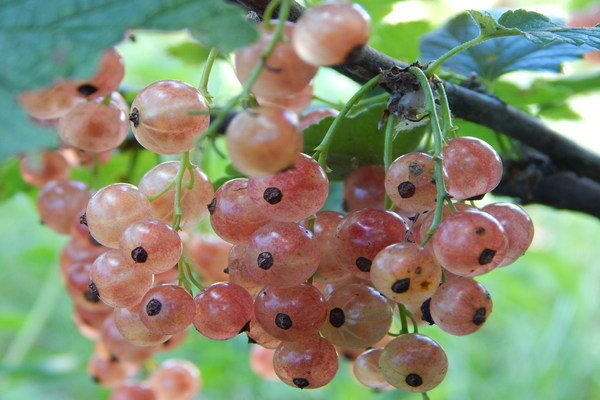

Refers to early ripening varieties. Fast-growing species. At the end of June, as a rule, 100% ripening of all fruits occurs. Bright, pink fruit color. Excellent taste: sweet, juicy, large berries. Very high sugar content. It is this fact that lends great sweetness. A slight sourness becomes piquancy.
In terms of the content of nutrients, the variety takes one of the first places:
- vitamins: A, C, E;
- acids: ascorbic, succinic;
- trace elements in large quantities: copper, iodine, iron, magnesium;
- pectins.
Fruiting is annual, abundant, regularly. A distinctive feature of the variety: increased resistance to diseases and pests. And also safely tolerates wintering. Of course, all these qualities can be lost without observing the rules of agricultural technology. For successful growth and fruiting, he prefers places in summer cottages that have sufficient sunlight and are well ventilated.
Pink currant Rossoshanskaya
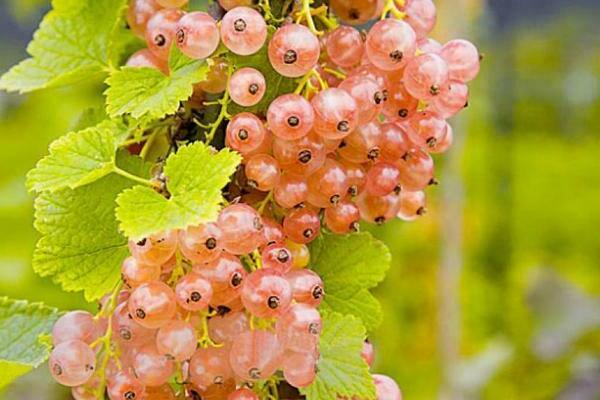

Experienced gardeners consider this variety to be promising. It is considered one of the best species. Juicy, large, sweet fruits. Excellent taste is considered another distinctive feature. Pronounced pink color of berries. Transparent skin. Self-fertile variety. That is, there is no need for artificial pollination. Or attracting pollinating insects. The average ripening period is usually the second half of July. The bush is high enough. Abundant branching and green canopy. Differs in pronounced immunity. The variety is not afraid of winter frosts. And also it is resistant to diseases, pests.
Variety Jumping
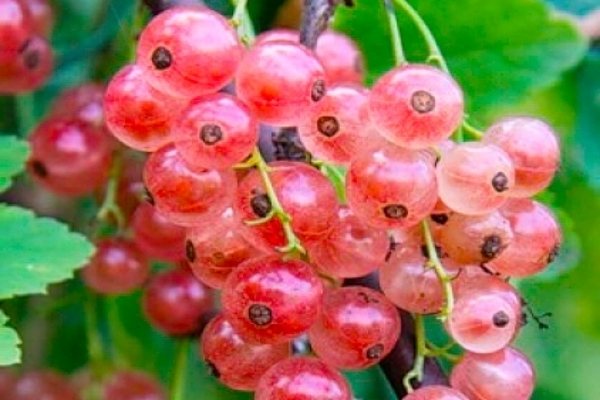

A hybrid bred by crossing white and red currant varieties. Bred in Belarus. Medium-sized bush, straight runs. The green crown is not spread out strong. Fruits are light pink in color. The high content of ascorbic acid gives the berries a pronounced sweet and sour taste. Increased productivity. And also excellent immunity to diseases. For example, powdery mildew. Resistant to frost. The downside can be considered a small vulnerability to "leaf spot", as a type of disease.
Diseases and pests
Pests
The variety "Gollandskaya rozovaya" is susceptible to damage by garden pests, such as:
- many types of garden berry sawflies;
- different types of gall aphids;
- glass cases;
- spider and kidney mites;
- aphids. This link will tell you about the remedy for aphids on currants.
- gooseberry scabies and caterpillars;
- fireflies;
- leaf rollers.
To combat, you will need treatment with insecticide solutions of both contact and systemic properties of impact on pests. According to gardeners, treatments prepared with solutions strictly according to the instructions of the preparations will be effective:
- Actellika;
- "Karbofos";
- Rovikurta;
- Aktara;
- "Metaphosa";
- "Phosphamide";
- "Vofotox".
- Fitosporin.
The list goes on, the industry is releasing new pest control products. Also read about Fitoverm for currants here.
To avoid damage by pests and diseases, you can simply carry out responsibly all operations for caring for plants and the timely start of treatments at the first signs of damage to currants. This is the only way we can protect the productive bushes and save money on the purchase of expensive garden chemicals.
Diseases
The plant is susceptible to most types of diseases affecting all types of gooseberries, currants. On the site you can find a separate article on the fight against diseases of garden crops. Among the main diseases of the "Dutch rose", we single out several main ones that require immediate intervention by gardeners:
- Anthracnose. This material will tell you about anthracnose on grapes.
- "White spot";
- Powdery Mildew;
- "Terry";
- "Striped Mosaic";
- "Chlorosis";
- "Nectric drying of shoots";
- "Striped Mosaic";
- goblet rust;
- "Gray rot".
To fight diseases, we use solutions of contact fungicides:
- Abiga Peak;
- simple and effective solution of Bordeaux liquid;
- "Captan";
- "Hamitsin";
- Topsin M;
- Fundazol;
- colloidal sulfur solution;
- "Kuprozan".
We prepare solutions of these preparations according to the scheme indicated on the package and process all parts of the plant and the soil in the aisle. All shoots and foliage with signs of the disease must be cut off and burned behind the site. But viral types of diseases will require the removal of the entire bush, no solution can save them. Therefore, we note once again - prevention, removal of affected plants and foliage and maintenance of moist and loose soil under the bushes. By doing this work with full responsibility, you will be able to preserve your garden.
Lyubava pink
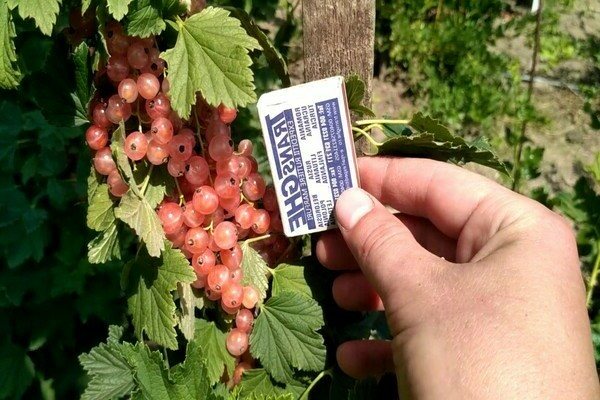

The variety is obtained as a result of crossing white and red currant varieties. Free pollination was used. Hybrid, because it was bred empirically. Very high productivity. Average ripening times. The berries are pale pink. Ascorbic acid is found in an increased amount. Which gives the fruit an enhanced, sweet and sour taste. The bush is small in size, the crown branching is insignificant. It perfectly tolerates prolonged hot weather in summer and severe winter frosts.
Fruiting is regular. Abundant, simultaneous ripening of fruits, which facilitates harvesting. The berries can remain on the bush for a long time without crumbling, even when fully ripe. Young shoots bear fruit. And also adult branches. Berry clusters with a large number of berries are formed, up to 16 pieces per one.
Important! Berries are absolutely incapable of causing various types of allergies. Therefore, they are suitable for treats for both children and people suffering from a specific disease.
Characteristics
Dutch currants are unpretentious, but require the necessary care to return a bountiful harvest. The culture grows equally well in sunny places and in a light partial shade during midday. It bears fruit best in fertile land with sufficient moisture. Unpretentious, adapts to different growing conditions and climates.
Drought resistance, frost resistance
The main feature of the Dutch currant is its excellent winter hardiness. It can easily endure harsh winters under snow cover, but freeze during spring frosts when the snow melts.Therefore, in the spring, the bushes are covered with non-woven material. Young seedlings are prepared for winter by high hilling with snow or humus. There is no need to cover currants for the winter, they are able to withstand temperatures up to 45 degrees below zero.
Pink Dutch currants require adequate moisture. But unlike black or white currants, they are drought tolerant. Although a prolonged moisture deficit leads to a decrease in yield and crushing of fruits.
Variety yield
According to gardeners, red or pink currants of Dutch selection are very productive, which significantly differs from other varieties of red currants. On average, 6 to 9 kg can be harvested from one bush with proper care and optimal growing conditions. The fruits ripen in mid to late July, but remain fresh until September. The fruits do not crumble, do not bake in the sun, do not shrink and remain on the bushes for a long time, delighting the eye with beautiful brushes.
Application area
Dutch currants are suitable for fresh consumption and for processing. It is great for preserving compotes, making jelly, preserves, and jam. Red currant berries, dense in structure, are stored for a long time and easily tolerate transportation. The fruits of pink currants have a more delicate shell, so they must be transported very carefully.
Pros and cons
Dutch selection of pink currants has the following advantages:
- resistance to diseases and pests;
- frost resistance and drought resistance;
- high taste of sweet, without harsh acid, fruits;
- good yield and fast ripening of berries;
- thin-skinned fruit with few seeds.
There were no minuses in the berry culture.
Pink pearl
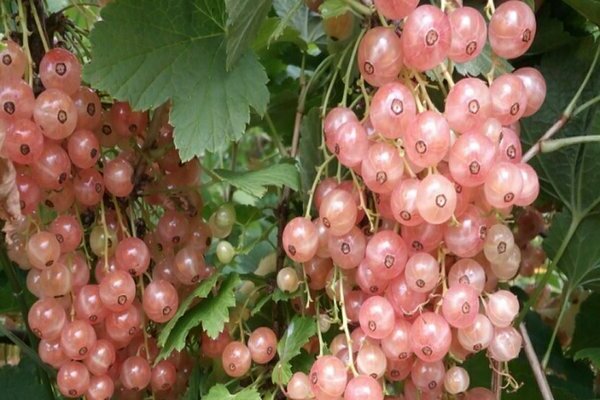

Variety of Canadian origin. The fruits are very sweet and large in size. Acids are completely absent. It can be grown in any climate. From temperate regions to southern regions. A completely unpretentious shrub to the methods and conditions of growth. A medium-sized bush, the crown is widely spread. The presence of such a shelter allows the fruits to be completely protected from sunburn.
The presence of a powerful root system, an increased number of lateral shoots allows the plant to provide itself with a sufficient amount of moisture. As well as essential nutrients. Increased fruiting. Differs from simple currant varieties. Good resistance to fungal diseases. Pest attacks can be harmful. But dealing with those is easy enough. Just use a light pesticide treatment. Accordingly, strictly according to the instructions.
Rose currant variety Rosa-Chair (fine)
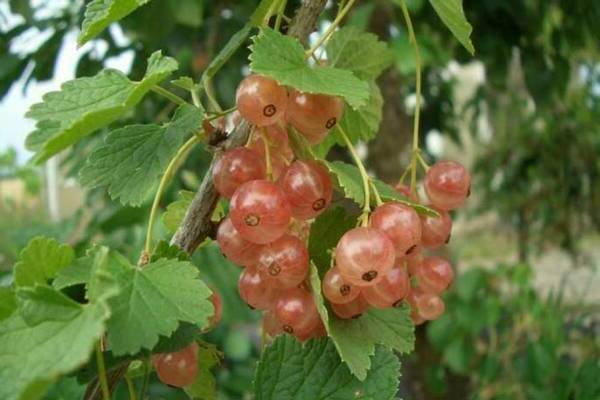

Representative of dessert currant varieties. In terms of ripening - average, about mid-July. A low bush forms a crown, not very spreading. Which gives the impression of being compact. It looks neat. The picture is complemented by a beautiful abundant flowering. The color of the berries is uniform, pink, very intense. Soil quality is not the most important factor in the requirements of this shrub. But on the recommendation of experienced gardeners, we can say - still choose loamy, not weighted soil. This choice will allow you to get a decent harvest regularly every season.
It is better to choose a sunny site for planting currants. A little shadow won't hurt. It must be well ventilated to avoid the occurrence of various fungal diseases. If you choose an area with poor lighting, this fact will lead to a decrease in sugar in the fruit. The palatability will change. And also acid will be added.
Dutch Pink Currant
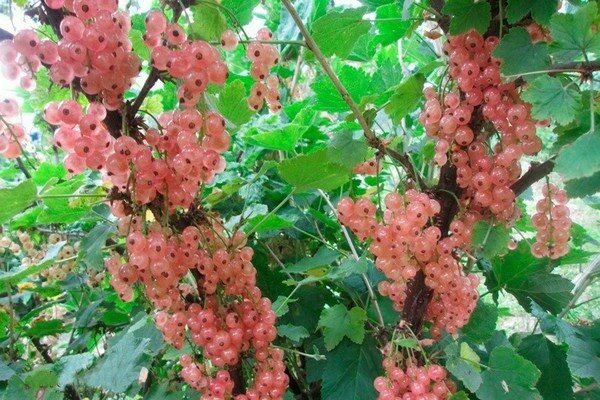

Late ripening variety. It is very popular for its varietal accessory. Differs in a decent height. An adult bush can grow up to one and a half meters. The crown is quite extensive, spread out. But there is no strong density.Large fruit size. The color is light pink. Follow all the rules for caring for this variety and you can harvest berries about the size of a cherry. Dutch dessert variety. Hence, there is a pronounced sourness in the taste.
Sufficiently high yield. It is easy to achieve this amount of harvest, up to 9 kilograms per bush. The variety is not picky about care. It tolerates low climatic temperatures well. And also the frosts that have arisen. And a prolonged drought cannot cause significant harm to fruiting. The main thing is proper care. Although not very embarrassing. The immunity to pests and diseases is very good. But do not neglect prevention.
Important! The berries are not stored for a long time. Because they were simply not meant to be. Therefore, it is desirable to use them fresh.
Seedling care
Planting is an important operation, but it is even more important to provide the plants with proper and timely care. Such care will help the perennial plant to develop normally and increase its yield.
Pruning
There are 2 main types of pruning of Dutch pink currant bushes:
- Fall. During this period, after fruiting and leaf fall, we carry out a sanitary cutting of all broken shoots affected by diseases and pests. Be sure to remove all branches growing inside the bush. It should always remain free for sunlight to enter and air the plant.
- Spring. This is the time to complete the main stage - the formation of the crown of the plant and the removal of damaged shoots after winter. The plant after the first wintering - on it we shorten all the shoots by 1 bud from the outside and form a compact bush with a crown in the form of a ball. Every year we add 3-4 strong shoots, bringing their number to 20 by the year 5. In the seventh year, we perform rejuvenating pruning, removing old branches, leaving the young, most developed and strong zero shoots, which will already yield a harvest next year. The main condition is that they should not come into contact with the ground and intersect with other shoots. We shorten such shoots by half, and completely remove the rest, leaving 3-4 new shoots.
This article will tell you about pruning red and white currants.
Sanitary pruning can be done at any time of the year. If the seedling is affected by disease, you may need to completely remove the sprout in the summer, rather than wait for the fall.
Watering
We do not recommend getting carried away with watering. It is imperative to perform 2 basic watering of plants - in autumn and early spring. For this:
- we dig in and loosen the soil under the bush. We shovel the earth from the seedling, make a shaft of earth along the diameter of the currant crown;
- we apply the necessary mineral fertilizers and fill the hole with 50 liters of water;
- after feeding the moisture, level the soil and fill the trunk circle with mulch.
In the summer, you will need to water the plants at 10-15 liters per bush, increasing the amount of watering during drought and reducing it during the rainy period.


The main rule is that the soil under the bush should always be loose and moist, but not wet.
Mulching reduces the amount of watering. To reduce the risk of fungal diseases and the appearance of aphids, we recommend placing a drip irrigation system under each plant. It will reliably and evenly water the soil around the plant and will not increase the level of evaporation.
Top dressing
During the first 2 years, it makes no sense to apply additional fertilizers under the bushes, they have enough nutrition from the prepared mineral nutrient mixture when planting. For 3 and the following years of currant development, in the spring and autumn we carry out the main complementary foods.


Spring is the time for the introduction of organic matter and nitrogen species of nutrient solutions. Summer and autumn - during this period, it is important for the plant to feed with potassium - phosphorus solutions.
Here is a simplified fertilizing calendar:
- Spring - we use an aqueous solution of 10 liters of water and 100 g of dry chicken droppings or embed ammonium nitrate in the soil, at the rate of 70-80 g for each bush of "Dutch pink" currant;
- June - we dilute a solution of bird droppings or mullein soaked in water at the rate of 1 liter of slurry of manure per 10 liters of water. Having made a roller of soil along the diameter of the crown, pour out the solution and immediately fill the hole with warm water. So food can freely pass to the root system of the bush.
- at intervals Once every 2-3 weeks we feed the plants, alternating organic matter with the introduction of 15 g of urea and potassium sulfate, 20 g of superphosphate before watering under each bush;
- in summer plants, especially after being damaged by diseases, are treated with a solution for foliar feeding. To do this, dilute boric acid in 10 liters of water - 2.5 g; copper sulfate - 2 g and 3 g of ammonium molybdenum and zinc sulfate. We process all parts of the bush with the resulting solution, literally pouring it with a spray solution.
- fall - it's time to add superphosphate, urea and organic fertilizer during pre-winter watering. Under each bush we add up to 20 kg of organic matter and add superphosphate 100 g and potassium sulfate 50 g.
Shelter for the winter
"Gollandskaya rozovaya" is a frost-resistant variety that can withstand low temperatures. Covering bushes in winter will be required in several cases:
- young seedlings planted in spring or autumn. Such sprouts will not be able to survive the winter on their own, therefore they are covered with old roofing felt or cloth, fixing the ends with pegs or earth;
- plants that have undergone diseases and have lost their foliage in the summer, due to insufficient nutrition, they approach the winter weakened. It is better to cover them for the winter. To do this, we fix the inclined shoots to the soil with metal brackets and cover them with roofing paper. We fix the ends of the covering material with earth;
- established severe frosts, without snow protection, can damage fruit buds and deprive gardeners of their harvest.
Read about preparing currants for winter here.
Harvesting and preserving crops
The berry ripens amicably, so it remains to choose a dry day and harvest delicious berries in small boxes or flat containers so as not to damage the delicate skin. At the end of July, having harvested the harvest, you can start canning berries. They can be used in the preparation of preserves or jams and in compote - assorted with other berries and fruits.
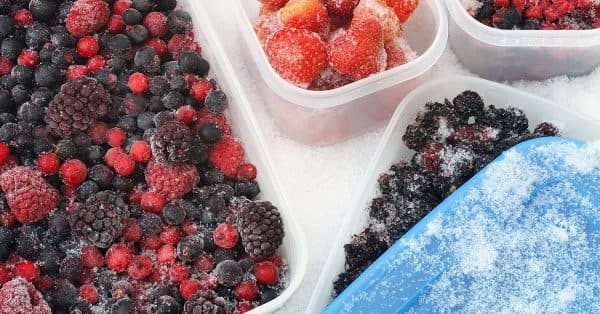

In order to eat fortified berries in winter, immediately after harvesting they are cleaned of brushes and placed in plastic containers and placed in the freezer.
Winter is winter, but we recommend eating a delicious berry to your heart's content, just fresh. To preserve it, put it in small bags and put it on the bottom shelf of the refrigerator. Now for a long time you can cook delicious compotes from fresh berries and fruits and treat your relatives with berries.
Planting, process features
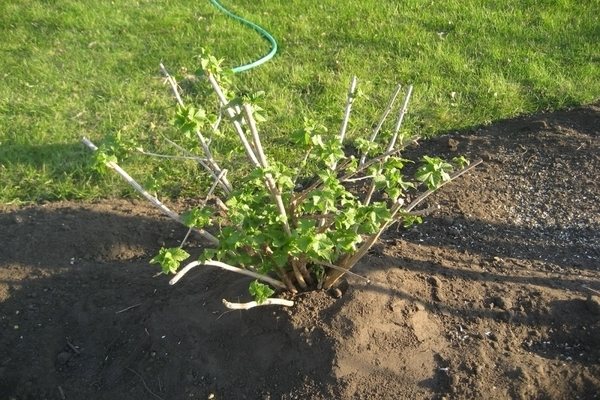

All varieties, colored varieties of ordinary garden currants (white, red, golden, pink) are very unpretentious berry bushes. However, each has its own agrotechnical rules for planting and care. Nobody canceled them. And you should strictly follow all the rules. This is a necessity and should be taken as a fact. Failure to comply leads to frustration. You will not get the expected harvest. Moreover, even a plant that is unpretentious and resistant to most external influences can simply get sick. And also, in the worst case, it is bad to develop and die.
In the case of Pink Currant, let's highlight some rules:
- time for planting is better to choose autumn. Namely, the beginning of the autumn period. For example, in September. If you did not manage to plant the crop before October, postpone it for the next season. Because the plant simply does not have time to adapt to new conditions. And your labors will be a waste of time. Many years of experience of gardeners does not recommend planting in the spring;
- choose sandy or light soil.As well as loamy composition. Acidity neutral. Low-lying places immediately disappear. Currants do not accept dampness. It develops poorly under such conditions. Subsequently, he simply dies. The selected area should be well lit, open. And also not shaded by various tall cultures or buildings;
- self-fertility of currants contributes to obtaining a large harvest. You can enhance the effect of pollination with other varieties. This additional pollination improves the regularity and quality of the crop.
Agrotechnics of correct planting
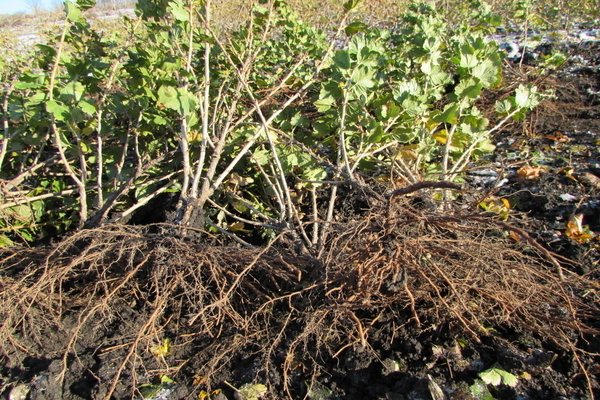

An important factor is the choice of planting material, seedlings. The propagation method is more preferable than graft propagation. Cuttings are usually much more difficult to take root. Seedlings are chosen one or two years of age.
Evaluating signs for planting material will be:
- the root system must be well developed, strong for the seedling. And also healthy in appearance;
- the roots should not be dry. When trying to bend, they easily give in to this action;
- no mechanical damage on close inspection;
- there is not even a hint of the presence of any disease, light rot. As well as mold formations.
If any violation of the above is found, such seedlings are immediately rejected. Because the hope for their salvation is 20%. This means that you can simply waste precious time without getting any results. Quality seedlings should have no more than three main roots. Multiple lateral shoots are present. The root is very firm. If you try to bend strongly, it will bend. Then it takes the opposite form. No cracks or fractures are formed. Since the seedling is pruned, its height does not matter. If, upon examination, you made sure that the plant is healthy, but it has a dry root system, just hold the roots in water for at least 3 days.
Features of planting works
Before starting work, a novice gardener will need to familiarize himself with the recommendations for carrying out preparatory measures and planting seedlings in open ground. Let's take a closer look at these issues.
Seat selection
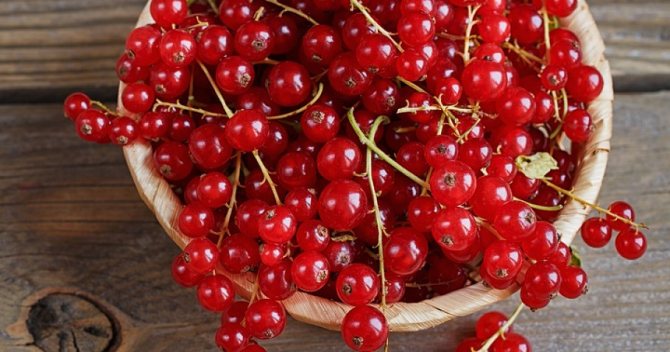

This type of plant can grow and develop normally in any conditions, but in order to increase productivity and extend the fruiting period of shrubs, it is better to choose a place for them, taking into account several rules:
- currants develop freely in sunny areas, with a minimum illumination time of up to 12 hours;
- plants are best planted in a dry area with loose and soft soil. If this is not possible, you will have to prepare the soil before planting the plant. To do this, mix manure, compost in equal shares and evenly scatter it over the soil before digging in autumn. For 1 m2, you will need to add up to 60 kg of nutrient solution;
- currants do not like areas with an increased level of soil acidity. It is easy to lower this level to normal; it is enough to add 200 g of quicklime per 1 m2 to the soil;
- the plant reacts poorly to places with constantly blowing winds and drafts;
- shrubs are best planted along paths or fences.
Landing dates
The best planting time is autumn. During this period, it is easy for the gardener to determine the quality of the seedling by the condition of the foliage and roots. In the fall, nurseries sell out the bulk of the planting material, leaving only unsold plants for the spring. You can read about choosing a seedling in a separate chapter of the article.
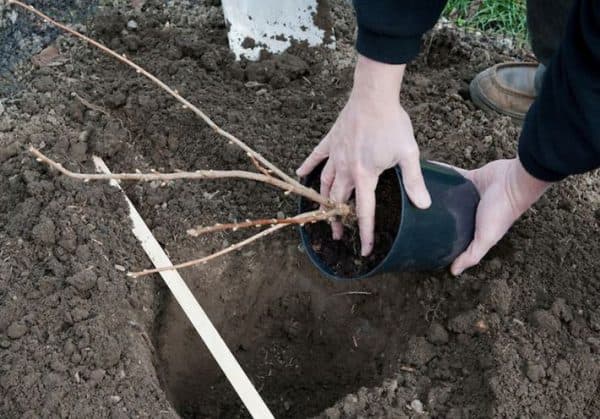

In autumn, the planted bushes undergo natural stratification (cold treatment of the plant) and when the first warm days come, they begin to develop rapidly, far ahead of the seedlings planted in the spring.
But in the first winter, the plants need to be protected from frost. For this, we wrap the plant with covering material, old lenolium or roofing paper. By this we save the unrooted, weakened bush from frost, and juicy, young shoots from hares and other lovers of tender bark.
Site preparation
For the preparatory stage, this is one of the most important jobs. This is how we provide the roots of the currant with nutrients and provide normal distances between the bushes for ventilation and lighting:
- At a distance of up to 2.5 m from each other, we dig planting holes with a diameter of 400-450 mm and a depth of up to 500 mm. Set aside the top fertile soil layer.
- We carefully loosen the earth from the hole and mix it in the same amount with humus or compost. We add mineral fertilizers to this composition:
- superphosphate - 200-250 g;
- potassium permanganate - 40 g;
- sifted wood ash - 300-400 g.
- If the soil in the area is wet, lay a layer of good drainage on the bottom of the hole. For this we use broken brick, crushed stone or old chipped brick. The thickness of the drainage layer is from 100 mm, but its value should be taken into account when determining the depth of the pit. Mix the nutrient solution thoroughly and completely fill it into the well.
- Pour up to 30 liters of water into the hole and leave it for 14 days. During this time, nutrients will dissolve in the ground.
Selection of seedlings
If it is not possible to grow your own planting material or simply divide a strong bush into several seedlings, you will need to buy a plant from nurseries or from trusted sellers. It is better to go for the bushes to the nursery itself, where you can choose a plant directly at the school.
What is important to pay attention to when choosing currants:
- The level of development of the horse system and its condition. If the rhizome has a branched root system with many buds - such a bush can be safely bought. The root system consists of 1-2 roots or the roots have an unhealthy appearance with traces of disease or pests, or the roots are dry and brittle - it is better not to buy such a seedling even for very ridiculous money.
- We pay attention to the processing of the roots after their shortening. If the roots are not treated with ash, pitch - such a seller did not take care of the seedlings and the roots could dry out.
- The level of flexibility and the state of the shoots. If foliage remains on the bush, you can easily determine the seedling from it, what kind of currant the seller is trying to sell you. It is so easy to distinguish black currants from the rest, even without knowing the structure of the foliage. It is enough just to rub the leaf and if the genuine aroma of black currant spreads, they are trying to sell you a low-grade seedling. Shoots should be thick, pliable and succulent. Another indicator is the color of the shoot, it should be green with a slight yellowness.
- Shoots should not have traces of damage by pests or diseases - such seedlings will not 100% bring fungi or infection and pests into the garden.
It is not recommended to plant plants on a hot day. It is better to do this in cloudy or cloudy weather without strong winds. We carry out all work in several stages:
- we take out the prepared soil to a depth greater than the length of the rhizome. It is better to lay out the earth on film;
- in the middle of the hole we pour a small mound, place a seedling on it and carefully straighten each root, distributing the roots around the entire circle;
- we begin to cover the rhizome with loose soil. When the hole is completely filled, gently compact the soil around the plant with your foot;
- in small portions, pour 20-30 liters of water on each bush;
- after the water has been fed, we fill the hole and the ground around with a layer of mulch;
- we cut young shoots at a distance of 150 mm from the ground level, so we ensure the development and engraftment of the root system. Shoots will begin to grow in the spring, getting nourishment from a strong rhizome.
Rules for planting pink currants
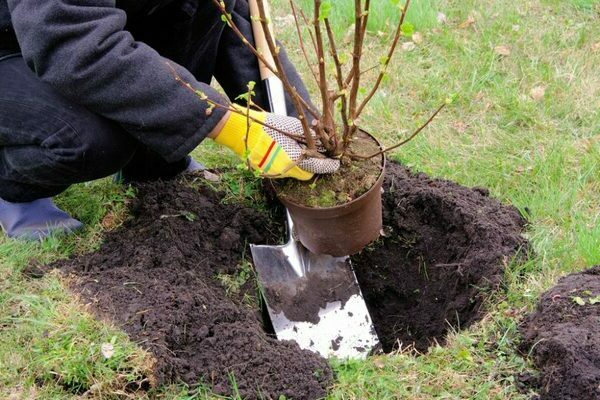

As a rule, gardeners in their plots plant not single bushes of different ripening periods. Such a system helps to harvest at different times. And also during the whole summer period to have tasty healthy berries on the table. When planting, it is necessary to follow the rules of agricultural technology for each variety.In some ways they are similar, but there are differences.
The first is the distance between plants. If the bush is compact, then a meter distance will be sufficient. If the bushes are powerful, branched, at least one and a half meters. In the case of red currants, if the plantings are formed in rows, the row spacing is at least 2.5 meters. There are still varietal characteristics. Therefore, when choosing a distance, be guided by the situation. Depending on the variety chosen.
Loose, loamy soil is a great place to plant pink currants. Highly acidified areas? It is necessary to add a solution of chalk or lime. The seedling hole is deep enough. Typically up to 50 centimeters. Width is approximately 0.5 - 0.7 meters. The soil needs to be nourished. Look at the situation. Mix superphosphate or potassium sulfate with the soil dug from the planting pit. Add humus, mix thoroughly.
The preparation of the pits is carried out four weeks before planting the seedlings. The landing method is used inclined. Which contributes to the formation of multiple branches in the plant. The seedling was placed, covered with prepared soil. And also be sure to seal well. Watering, at least 0.5 buckets of water per bush. Mulch the soil around the plant with humus. In dry summer weather, re-irrigate no earlier than three days.
Growing
Currant is an unpretentious crop that requires minimal care for the formation of berries. The yield and health of the bush directly depend on the observance of the terms and agricultural techniques of planting. The timing and algorithm of work may vary depending on the quality of the soil, climatic conditions in the region.
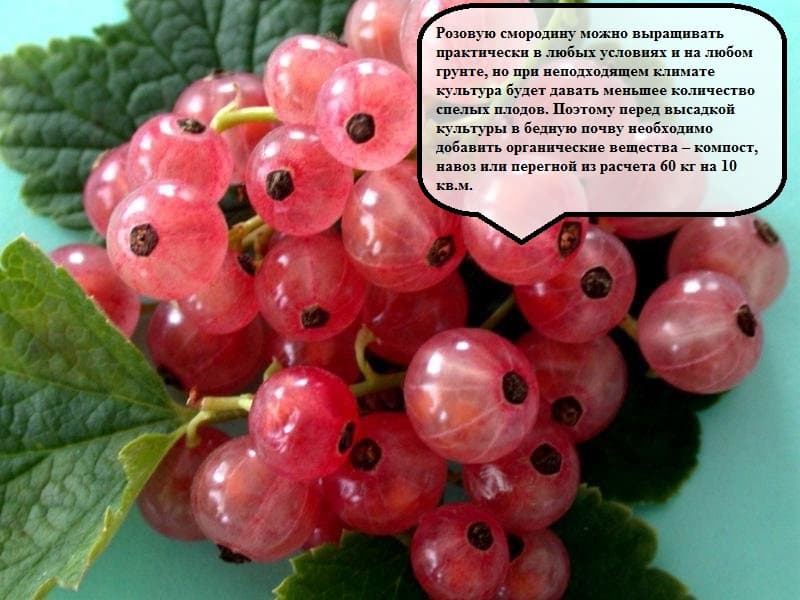

Landing
Currants in a garden are planted with grown seedlings from 2 years old. Their bark normally has a uniform light brown color, there should be no traces of mold, rotting and other signs of fungal infections. Landing is carried out in individual pits with a depth of 20 cm. It is recommended to lay a drainage layer at the bottom, as well as 200-250 g of wood ash. The seedling is placed strictly in the center of the hole, after which it is covered with a layer of fertile soil. Immediately after work, water the area of the trunk circle abundantly and mulch it with sawdust, peat or humus.
The features of growing Prune gooseberries are described in this article.
Pick up time and place
It is recommended to plant pink currant seedlings in the soil in the spring after the end of return frosts. The soil and air should warm up to stable values of 10-14 oC. In warm regions, planting can be carried out from the second decade of April. In the north, it is advisable to wait until early May. Among gardeners, autumn planting of seedlings is also practiced, with this method you can accelerate the first growing season, but there is a risk of hypothermia of the young plant.
For cultivation, it is recommended to choose bright areas with good lighting, protection from the wind is not required. The culture prefers fertile and drained soil with a neutral or slightly acidic reaction. Do not plant currants in lowlands or near a pond, as well as places with surfaces with groundwater.
Pink currant. How to water?
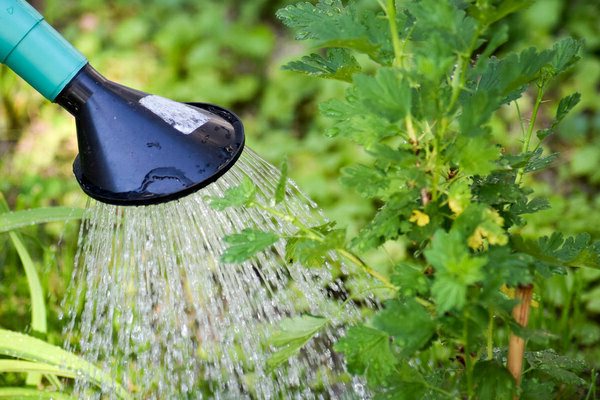

Watering is the main stage of currant care. Must be timely, sufficient. But do not water on the reserve. Stagnant water is detrimental to the culture. Autumn, proper care will allow you to have an excellent harvest next season. Do not forget about loosening and weeding from malicious weeds. Because they can cause various diseases. And they will also become an excellent shelter for pests during the winter.
Pink currant loves moisture very much. The development will be gradual, the plant will be healthy. And, accordingly, the long-awaited harvest will delight you with its quantity. Good hydration is the key to the correct development of the plant. But it shouldn't be done very often.As a rule, 5 waterings are sufficient during the summer season. It is taken into account despite the fact that the summer is not without rain.
If the summer is very hot, watering is necessary more often. Usually once a week. Liters 40 for each bush. Another type of irrigation is sprinkling. The process is very important for currants. In the event that rains are rare during the season, carry out regular artificial sprinkling. After the last harvest, the foliage begins to fall off en masse. Water each bush liberally for the last time of the season.
Prevention in the fight against possible diseases
In order to prevent disease and damage to the plant, it is necessary to carefully monitor the condition of the crown, branches, flowers and currant fruits.
Preventive actions to keep rose currant healthy:
- regularly inspect foliage, branches and other parts of the plant for damage;
- eliminate the affected parts to stop the spread of the disease;
- pruning the bush according to certain rules;
- monitor regular, but moderate watering;
- process currants with antifungal drugs;
- get rid of diseased crops on the site, burn them.
Top dressing
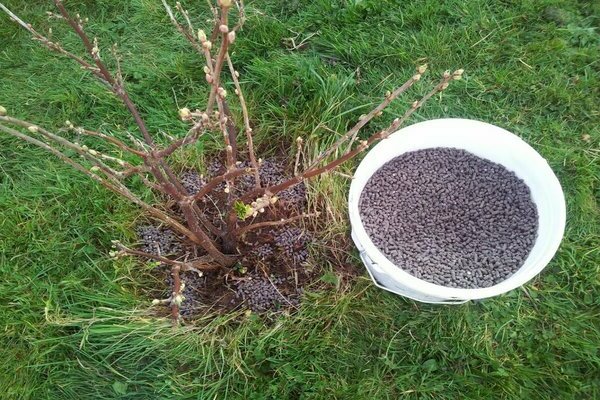

Colored currant varieties are excellent mineral fertilizers. For the entire growing season, currants must be fed at least 4 times. The first top dressing is carried out in the spring by introducing dry nitroammofoska, apply directly under the bush. The second feeding is carried out during the flowering period: superphosphate 10 grams + potassium sulfate 8 grams + a bucket of water. Pour out the entire mixture. In the amount of 200 grams per bush. The composition of the second dressing can be repeated after the last harvest.
Care requirements
Most varieties of pink currant tolerate the negative effects of the external environment. However, without proper care, the plant will die.
Watering and feeding
The plant requires abundant moisture. During the dry season, each bush should be watered weekly using up to 50 liters of water, and the currants should be sprayed. After such treatment, the soil should be loosened.
Organic and nitrogen-potassium-phosphorus fertilizers are used as top dressing of the culture, which are applied no more than four times during the year: in spring, during flowering and laying of berries, after harvesting.
Bush formation
Cutting pink currants is recommended shortly before the onset of frost or in early spring. Old and dried branches should be removed annually, leaving no more than 15 branches on the bush. After such processing, you need to coat the cut sites with garden varnish.
Preventive treatment against insects and pests
In order to prevent infection, the bushes are treated with boiling water in spring. If infected leaves are found, the latter are removed. If parasitic insects appear on the bush, the plant must be treated with insecticides.
Pink currant: pros and cons
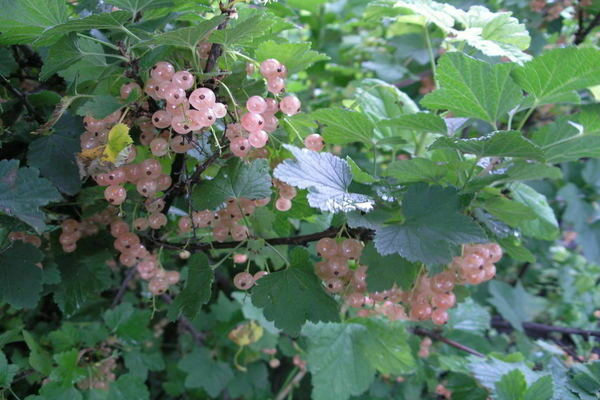

Pink currant takes the first places in the composition of nutrients. The number of such substances is unique in terms of quantity. The composition includes: trace elements, fiber. And also acids of organic composition. Despite some peculiarities, caring for currants will not be difficult. The bush is self-fertile. If you choose the right varieties, then the harvest can be obtained all season. The downside is that some varieties are prone to fungal diseases.
A few tips for the novice gardener
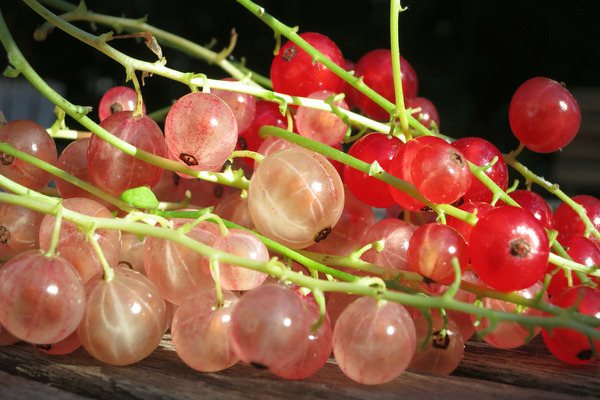

When choosing seedlings, be guided by the peculiarities of the climatic conditions of the region where you live. If the choice is correct, there will be no unjustified efforts when growing a crop. The soil is necessarily slightly acidic or close to neutral. The acidification problem is easy to solve - just add lime when digging the site.We choose neighbors for currants in accordance with the table of compatibility of different horticultural crops. Regular, timely watering. Necessary, recommended top dressing, especially in the spring.

